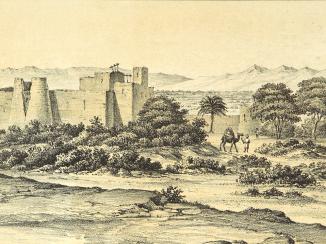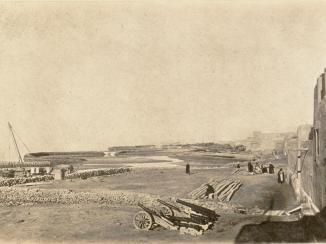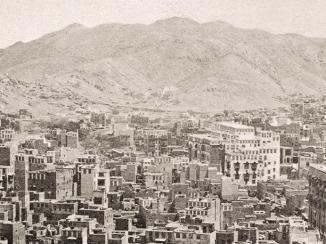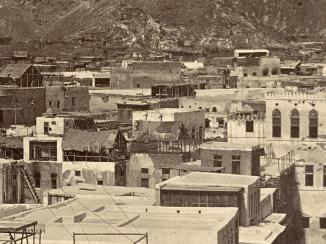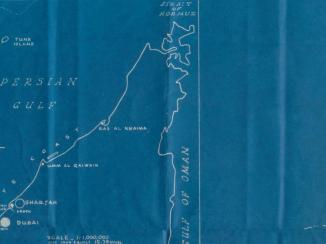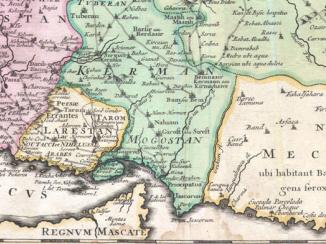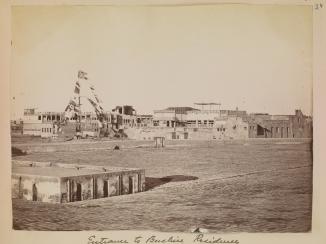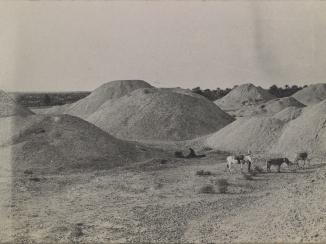Overview
The Islamic Republic of Iran is a nation situated off the eastern side of the Persian Gulf The historical term used to describe the body of water between the Arabian Peninsula and Iran. . Iran is bordered by Iraq, Turkey, Armenia, Azerbaijan, Turkmenistan, Afghanistan and Pakistan. The capital, Tehran, is located in the northern part of the country. Until the rise of Tehran, in 1778, the capital of Persia was located at various other major cities, such as Tabriz and Isfahan.
Although historically referred to as Persia by the Western world, the modern state became known as Iran in 1935. The historical and cultural usage of Greater Iran and/or Greater Persia corresponds to territories of Iranian cultural or linguistic influence, which include portions of the Caucasus, Mesopotamia, Eastern Arabia, the Indian subcontinent and Central Asia.
British relations with the Persian Government began after the British fleet supported Shāh Abbās I in expelling the Portuguese from Hormuz Island in 1622. In return they were allowed to establish an East India Company trading post at Bandar Abbas. Later, the post was transferred to Bushire, which became the main British Residency An office of the East India Company and, later, of the British Raj, established in the provinces and regions considered part of, or under the influence of, British India. in the Gulf from 1763 up until 1947. The correspondence files from the Bushire Residency An office of the East India Company and, later, of the British Raj, established in the provinces and regions considered part of, or under the influence of, British India. contain glimpses of Persian history throughout the Zand, the Qajar and the Pahlavi dynasties.
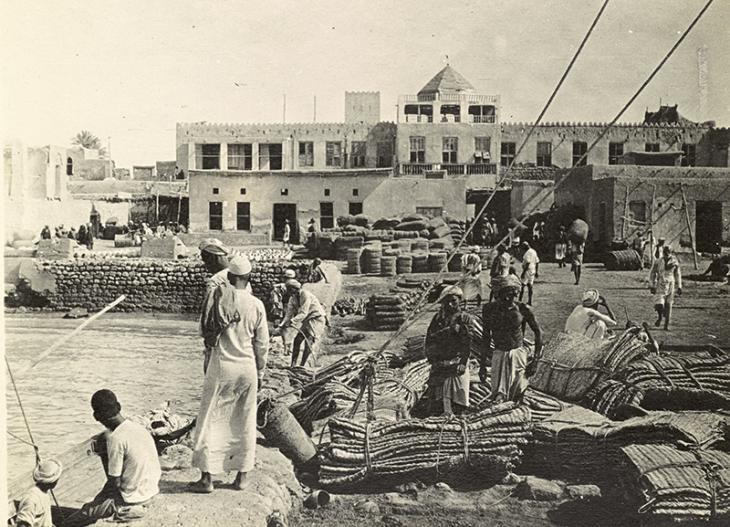
British influence in Persia was concentrated in Baluchistan (part of which is now a province of Iran) and along the coast, while the continental part of the country was subject to other European interests, including French and Russian. The first British Legation in Tehran was officially established in 1807, at the Qajar court of Fatḥ ʿAlī Shāh.
Tensions between Britain and Persia due to Persian territorial claims over Herat culminated in the Anglo-Persian War, 1856–57. Persian claims over Bahrain, too, continued to be disputed by the British in the twentieth century. However, in the nineteenth century, the British were concerned with securing lines of communication with India, which involved overland routes from the Persian side of the Gulf, by extending telegraph networks and by opening the Karun River to navigation. The discovery of oil in the twentieth century re-set their priorities.
Gas and oil reserves in Iran were the first to be exploited in the Middle East, with the granting of the Persian oil Concession to the Anglo-Persian Oil Company (now known as BP) in 1901. Under the rule of Reza Shah Pahlavi, who took power in 1925, British concessions in Persia were destabilised; the 1901 Oil Concession itself was cancelled before being re-negotiated in 1932.
In 1947, the British Residency An office of the East India Company and, later, of the British Raj, established in the provinces and regions considered part of, or under the influence of, British India. in the Gulf relocated from Bushire to Bahrain, where it remained until 1971.
Key moments from Iran’s history in the India Office Records include
- 1763: Establishment of the Bushire Residency An office of the East India Company and, later, of the British Raj, established in the provinces and regions considered part of, or under the influence of, British India. (IOR/R/15/1/1)
- 1779: The Death of Karim Khan Zand, ruler of Persia (IOR/R/15/1/3)
- 1853‒56: Russo-Persian Relations during the Crimean War (IOR/R/15/1/704)
- 1856‒57: Anglo-Persian War (IOR/R/15/1/145, IOR/R/15/1/146, IOR/R/15/1/147)
- 1860: Sir Lewis Pelly's journey overland from Persia to India through Afghanistan (Mss Eur F126/30)
- 1870–71: Great Persian Famine (IOR/R/15/1/182, Mss Eur F126/3)
- 1900: Persian officials offer William Knox D’Arcy an oil concession in Persia (IOR/R/15/1/636)
- 1912‒15: Turkish-Persian frontiers after the fall of the Ottoman Empire (IOR/L/PS/18/B213, IOR/L/PS/18/B380)
- 1920: Soviet activities and influence in the Middle East and Persia (IOR/L/PS/18/B358)
- 1929: Bertram Thomas documents the persistence of slavery in Persian Baluchistan (IOR/R/15/1/229)
- 1932: Renegotiation of the 1901 D’Arcy Concession (IOR/R/15/1/635, IOR/R/15/1/636)
Elsewhere on the web
Suggested Reading
Encyclopaedia Iranica [accessed: 14 October 2014]
Anglo-Iranian Relations since 1800 ed. by Vanessa Martin (London, New York: Routledge, 2005)
Ervand Abrahamian, A History of Modern Iran (Cambridge, New York: Cambridge University Press, 2008)
Hooshang Amirahmadi, The political economy of Iran under the Qajars: society, politics, economics and foreign relations, 1796-1926 (London, New York: I. B. Tauris, 2012)
Firuz Kazemzadeh, Russia and Britain in Persia: imperial ambitions in Qajar Iran (London, New York: I. B. Tauris, 2013)
Cambridge History of Iran, Vol. 7. From Nadir Shah to the Islamic Republic, ed. by Peter Avery, Gavin Hambly, Charles Peter Melville (Cambridge: Cambridge University Press, 1990)
Wright Denis, The English Amongst the Persians: Imperial Lives in Nineteenth-Century Iran (London: I. B. Tauris, 2001)

